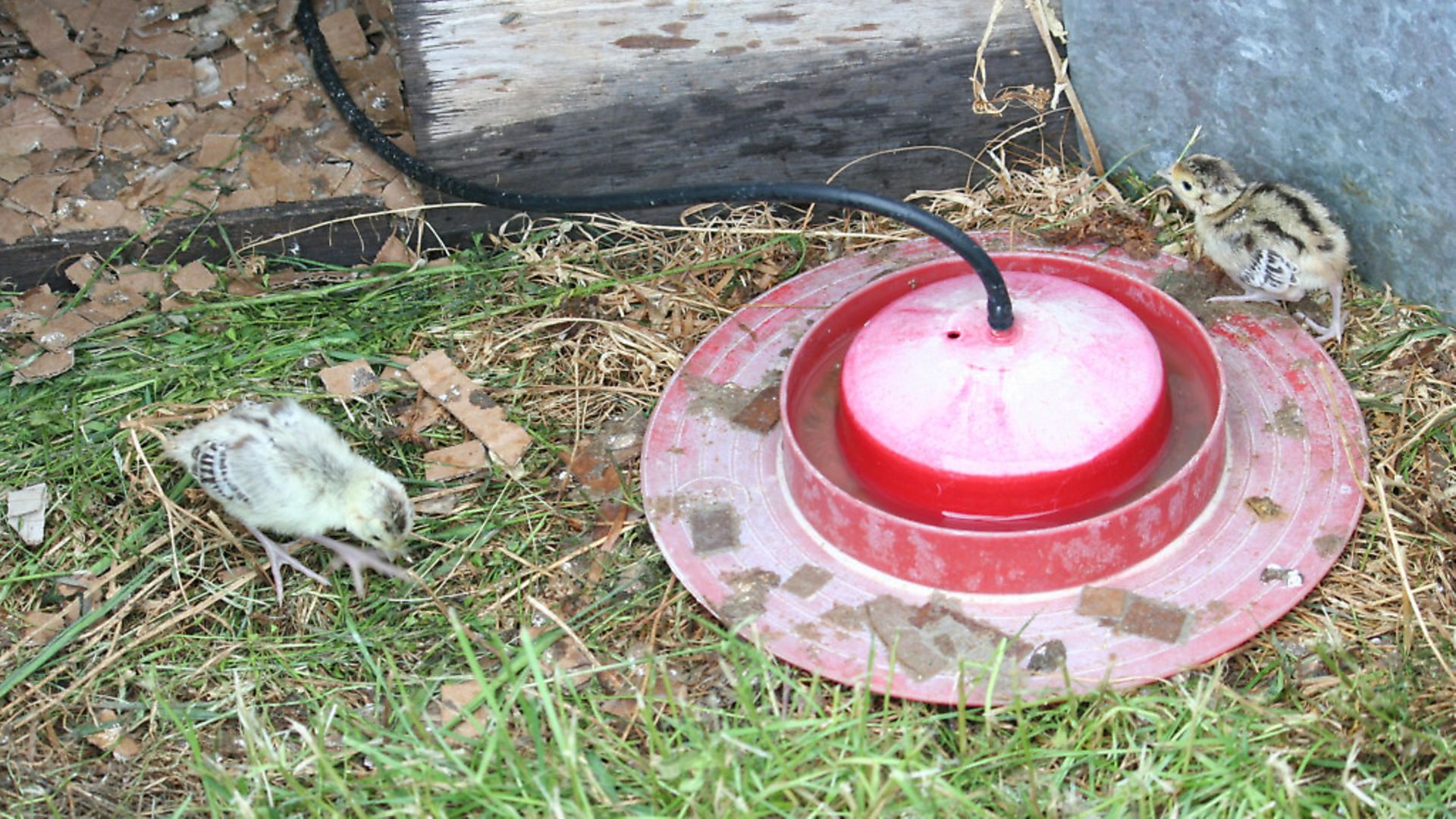What to feed young gamebirds and why

Tim Maddams looks at what we feed young game birds and why, what their natural diet would consist of and how to replicate it, and the routine use of antibiotics and its implications

So far in this series we have looked at egg production, overall number of birds reared, and briefly outlined the different options. We have looked at the commitment and time required to rear birds, and the process of importing eggs and chicks from abroad. This month we are taking a step back to look at feeding, and as we are doing so I thought we would look at medication, too.
Firstly, the feed. One thing any parent knows, or any pet owner even, is that food is in constant demand, and young children and animals are particularly keen to hoover up as much of it as possible. But what constitutes a good diet for young gamebirds? How much feed will they consume in the run-up to their release into the woods? Where will it all come from?
You are what you eat
In the wild, very young gamebirds will be fed largely on insects, seeds and greens (after their internal supply of feed from the remains of the yolk sack are consumed), and also larva which they are shown how to find by the parent bird. It seems reasonably obvious to me that this protein source will need to be replaced in the feed. Some protein can come from seed or plant sources such as soya (though this is environmentally dubious as it tends to be grown where rainforest should be growing) or seed. But for the high levels of amino acids very young birds require to replace the substantial insect protein they are missing, fish meal is arguably the best source. Fishmeal is made of tiny ground-up oily fish, captured in vast numbers at sea, and consists mainly of blue whiting, sprat, anchovy and scad; again though, this is environmentally bad news, and very costly. Of course, the amount of fish meal per bird is very small, and it’s far less industry-wide than that used by the poultry industry or the pig industry… still, that’s hardly the point!
The alternatives to fishmeal are limited, but it’s interesting to me that insects could be used to replace the insects they would otherwise be eating in their wild diet. Surely maggots or mealworms could be found in sufficient quantity to supplement the early diet, either dried as part of a milled feed, or simply fed live. I have heard of small-scale breeders who swear by maggots, sourced from tackle shops, as an addition to chick crumbs; they won’t use anything else and claim the birds thrive, which is hardly surprising given that it’s their natural choice.
Once chicks have progressed from crumb (or super fine starter crumb in the case of partridges), usually at around two weeks of age, they move on to the next tier of feed. This is usually in the form of mini- or micro-pellets. These are made with a base of cereal that is milled with oils, proteins and vitamins to create a balanced feed for the bird that will support its growth rate. Interestingly, pheasant feed will contain less protein at this stage, whereas partridges will require a higher level of protein for most of their lives, roughly two to three per cent more than pheasants.
Phase three is slightly larger pellets that are very similar to poultry grower pellets, again made of cereal, oils, protein and nutrient additives. They will be fed this, or perhaps a follow-on feed, right up to and during their release via pens into the wild. At which point many keepers will begin to introduce whole grains, such as wheat or maize, to the diet as well. This is a lot cheaper than manufactured feed but is by no means as complete in dietary terms and, though many birds will supplement their feed with insects and vegetation from the release area, their population will be very high and the local environment is unlikely to be able to provide this for long. Many keepers will feed a mix of wheat and milled feed to compensate until quite late into the season.
Just say no?
To all of these milled feeds various medications can be added to manage outbreaks of illness and disease. Broadly, there are two types of medication given to birds. Firstly, a wormer; this is given in the feed periodically to treat birds that have parasites of the gut, and in most cases this is a product called Flubendazole. Good use of fresh pasture, and indeed some claim herbal dietary additives such as garlic, can massively reduce the need to treat birds for worms.
There is some fascinating research happening around the use of herbs and plant extracts to treat bird health, and more and more people are putting their faith in good husbandry and careful controls of biosecurity to reduce the need for medication.
The second type of medication often added is, of course, antibiotics, which leads me neatly on to a current issue: the government has decreed that the use of antibiotics in animals must be dramatically reduced, and this includes use in gamebirds. There are lots of reasons for this, not least that the prophylactic use of antibiotics can, in some circumstances, lead to lower levels of welfare for the animals in terms of poor husbandry based on laziness and reliance on medications.
The most obvious reason to reduce the amount of antibiotics used on our gamebirds, and in the wider agricultural picture too, is that we are seeing more and more resistance to antibiotics from so called ‘super bugs’, and this is leading to problems with the effectiveness of antibiotics in both in people and animals. To give you an idea, some two-thirds of the antibiotics used worldwide are given, routinely, to animals.
Now, no one is suggesting that we shouldn’t use antibiotics – or, more correctly, antimicrobials – to treat sick animals, but their use should be restricted to the animals or members of the flock that have contracted an illness, not as a routine preventative.
In effect, you will still need a vet to come and take a look at stock in game farms to diagnose the condition or illness before a prescription is issued.
I think it’s important to understand this is part of a farming-wide intuitive and is not only for game rearing operations. So, how can rearing businesses best cope with this? The issue is a time-critical one, but an industry vet I spoke with is keen to move more towards water-based dosing systems anyway: “Sick birds don’t necessarily eat, so it’s hard to be sure they are getting the correct dosage. A water-based system is far better as even sick animals drink and most birds within the flock drink consistent amounts of water.”
This will, however, require better planning at the rearing ranch. He went on to say: “It’s going to be very helpful to all to shift to a water-based system, as the drugs can be administered far more quickly and efficiently, where and when they are needed, than in feeds – which must be milled, have the medications added and then be distributed.” However, the vet was very keen to stress that good husbandry is the key to reducing antibiotic use. Better biosecurity, lower stocking levels, and moving birds into release pens as soon as is appropriate will all help to minimise the need for medication in the first place. If more keepers were able to rear their own, or at least some of their own birds, this would help, too, as increased density of population creates increased risk of disease, with stress being a contributor as well.
As far as medication use in game rearing goes, the new government targets are stringent; the target of 50mg per kg is, in the game industry, going to be hard to meet. Current levels are ranging from 38mg per kg at best, to 1,500mg per kg at worst. The average for most producers at the moment is somewhere between 400-600mg per kg, so you can see there is a fair way to go. It is possible to produce birds with extremely low medicine usage, and some game farmers have been doing this for a long time, but they are, apparently, the exception rather than the norm.






